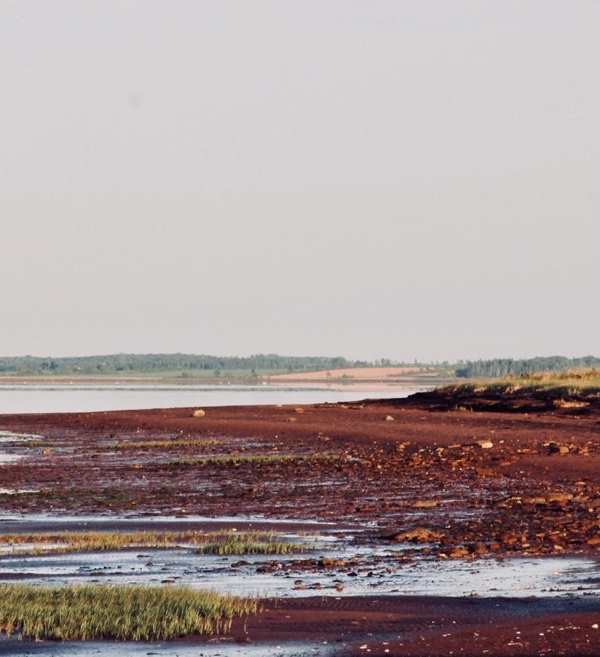Les Méditations à pied : devenir en place, en place devenir
DOI :
https://doi.org/10.25071/1916-4467.40660Mots-clés :
la synesthésie, animé, les corps, l’attention, l’harmonisation, la résonance, le sentimentRésumé
Entrelacée à travers quatre instantanés lyriques des relations haptiques avec le lieu—le Saskatchewan, New York, l’Afrique du Sud et l’Égypte—cette rumination philosophique considère la primauté du sentiment corporel préconscient sur l'apprentissage. La perception au niveau de base se décrit comme synesthésique—le corps entier ressent et bouge en relation avec des paysages agentiels. Les instantanés enchevêtrés incarnent une expérience inter-multi-sensorielle afin de refléter la façon dont nos corps existent par rapport aux choses vues et invisibles. Ensemble, les deux textes, les deux voix, appuient les pédagogies de la marche comme une praxis profonde au service du devenir, un déroulement toujours en cours avec le lieu, même lointain et inconnu. Les méthodes d’une attention lente, harmonieuse et rigoureuse, et de la résonance somatique, sont au cœur d'un programme terrestre.Références
Abilene. (2018, July 9). Medical discover news: Synthesia may provide clues as to how the brain is wired. Abilene Reporter News. https://www.reporternews.com/story/life/2018/07/09/medical-discover-news-synthesia-may-tell-how-brain-wired/764055002
Abram, D. (1996). The spell of the sensuous: Perception and language in a more-than-human world. Vintage.
Abram, D. (2010). Becoming animal. An earthly cosmology. Pantheon. DOI: https://doi.org/10.1080/14688417.2010.10589067
Ackerman, D. (1990). A natural history of the senses. Vintage.
Anderson, J. (2004). Talking whilst walking: A geographical archaeology of knowledge. Area, 36(3), 254-261. DOI: https://doi.org/10.1111/j.0004-0894.2004.00222.x
Barad, K. (2003). Posthumanist performativity: Toward an understanding of how matter comes to matter. Signs: Journal of Women in Culture and Society, 28(3), 801-831. DOI: https://doi.org/10.1086/345321
Basso, K. H. (1996). Wisdom sits in places: Notes on a Western Apache landscape. In S. Feld & K. H. Basso, Senses of Place (pp. 53-90). School of American Research Press.
Casey, E. (1996). How to get from space to place in a fairly short stretch of time: Phenomenological prolegomena. In S. Feld & K. H. Basso (Eds.), Senses of Place, (pp. 12-52). School of American Research Press.
Casey, E. (2001). Between geography and philosophy: What does it mean to be in the place-world? Annals of the Association of American Geographers, 91(4), 683-693. DOI: https://doi.org/10.1111/0004-5608.00266
Cytowic, R. E. (1989). Synesthesia: A union of the senses. Springer. DOI: https://doi.org/10.1007/978-1-4612-3542-2
Feinberg, P. P. (2016). Towards a walking-based pedagogy. Journal of the Canadian Association for Curriculum Studies, 14(1), 147-165.
Fulton, H. (2010). Walk. Visual Studies, 25(1), 8-14. DOI: https://doi.org/10.1080/14725861003606696
Gallagher, W. (1993). The power of place: How our surroundings shape our thoughts, emotions, and actions. Harper Collins.
Gasset, J. (2011, November 29). C. C. Benison: The landscape in which I live. National Post. Retrieved from https://nationalpost.com/afterword/c-c-benison-the-landscape-in-which-i-live
Heyrman, H. (2005). Art and synesthesia: In search of the synesthetic experience [Paper presentation]. First International Conference on Art and Synesthesia, Universidad de Almeria, Spain. http://www.doctorhugo.org/synaesthesia/art/.
Horowitz, A. (2013). On looking: Eleven walks with expert eyes. Scribner.
Ingold, T. (2010). Footprints through the weather-word: Walking, breathing, knowing. Journal of the Royal Anthropological Institute, S121-S139. DOI: https://doi.org/10.1111/j.1467-9655.2010.01613.x
Ingold, T. (2004). Culture on the ground. Journal of Material Culture, 9(3), 315-40. DOI: https://doi.org/10.1177/1359183504046896
Ingold, T. (2000). The perception of the environment: Essays on livelihood, dwelling and skill. Routledge.
Irving, A. (2010). Dangerous substances and visible evidence: Tears, blood, alcohol, pills. Visual Studies, 25(1), 24-35. DOI: https://doi.org/10.1080/14725861003606753
Irwin, R. L. (2006). Waling to create an aesthetic and spiritual currere. Visual Arts Research, 32(1), 75-82.
Jardine, D. (1998). “The fecundity of the individual case”: Considerations of the pedagogic heart in interpretive work. In D. Jardine (Ed.), To dwell with a boundless heart: Essays in curriculum theory, hermeneutics, and the ecological imagination (pp. 33-52). Peter Lang.
Judson, G. (2018). A walking curriculum: Evoking wonder and developing sense of place (K-12).
Keller, C. (1996). From a broken web: Separation, sexism, and self. Beacon.
Kabat-Zinn, J. (2005). Coming to our senses: Healing ourselves and the world through mindfulness. Hyperion.
Lippard, L. R. (1997). The lure of the local: Senses of place in a multicentered society. Norton.
Mencher, S., & Cytowic, R. (n.d.). Music and the brain podcast [transcript]. Library of Congress. https://www.loc.gov/podcasts/musicandthebrain/transcripts/loc_musicanndthebrain_cytowic.pdf
Merleau-Ponty, M. (1962). Phenomenology of perception. Oxford University Press.
Ogg, A. (2020, November 9). “Pleasantdale.” Cree Literacy Network. http://creeliteracy.org
Pink, S., Hubbard, P., O’Neill, M., & Radley, A. (2010). Walking across disciplines: From ethnography to arts practice. Visual Studies, 25(1), 1-7. DOI: https://doi.org/10.1080/14725861003606670
Püschel, A. (2017). Layers of reality. Perception study of a Synaesthete. The Eriskay Connection.
Solnit, R. (2001). Wanderlust: A history of walking. Verso.
Springgay, S., & Truman, S. E. (2019). Walking methodologies in a more-than-human world: WalkingLab. Routledge.
Stevens, W. (2007). Poem of the day: Tea at the palace of Hoon. In N. Alvarez (Blogger) Poem of the Month. https://ninaalvarez.net/2007/05/04/poem-of-the-day-50/ (First published in 1921)
Van Campen, C. (2009). The hidden sense: On becoming aware of synaesthesia. http://www.daysyn.com/vanCampen2009.pdf
Weil, S. (1947/1999). Gravity and grace. Routledge.
Whitehead, A. N. (1953). Science and the modern world. The Free Press. (First published in 1925)
Whitehead, A. N. (1941). Process and reality. The Free Press. (First published in 1929)
Whitehead, A. N. (1957). The aims of education. The Free Press. (First published in 1929)
Téléchargements
Publié-e
Comment citer
Numéro
Rubrique
Licence
© alexandra fidyk 2021 
Copyright for work published in JCACS belongs to the authors. All work is licensed under a Creative Commons Attribution-ShareAlike 4.0 International license.


